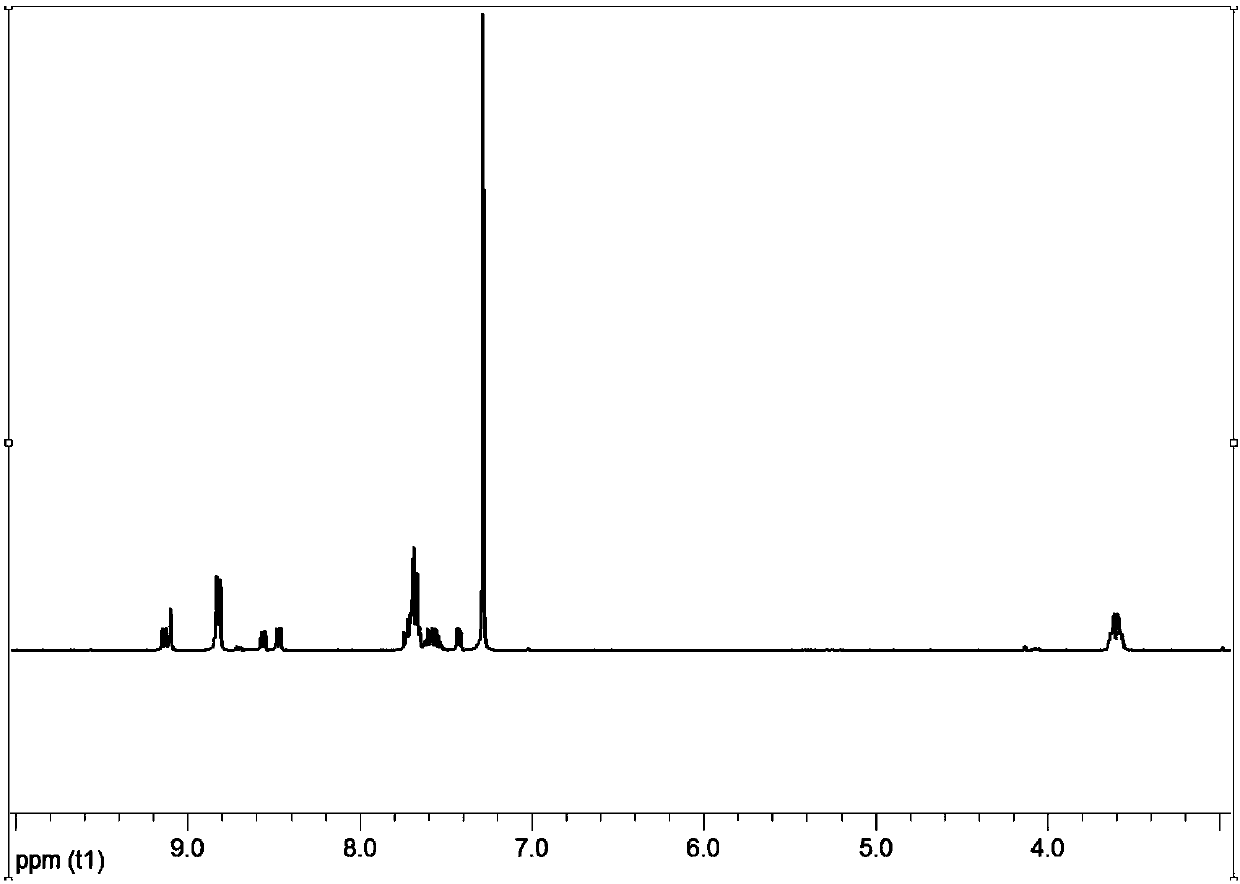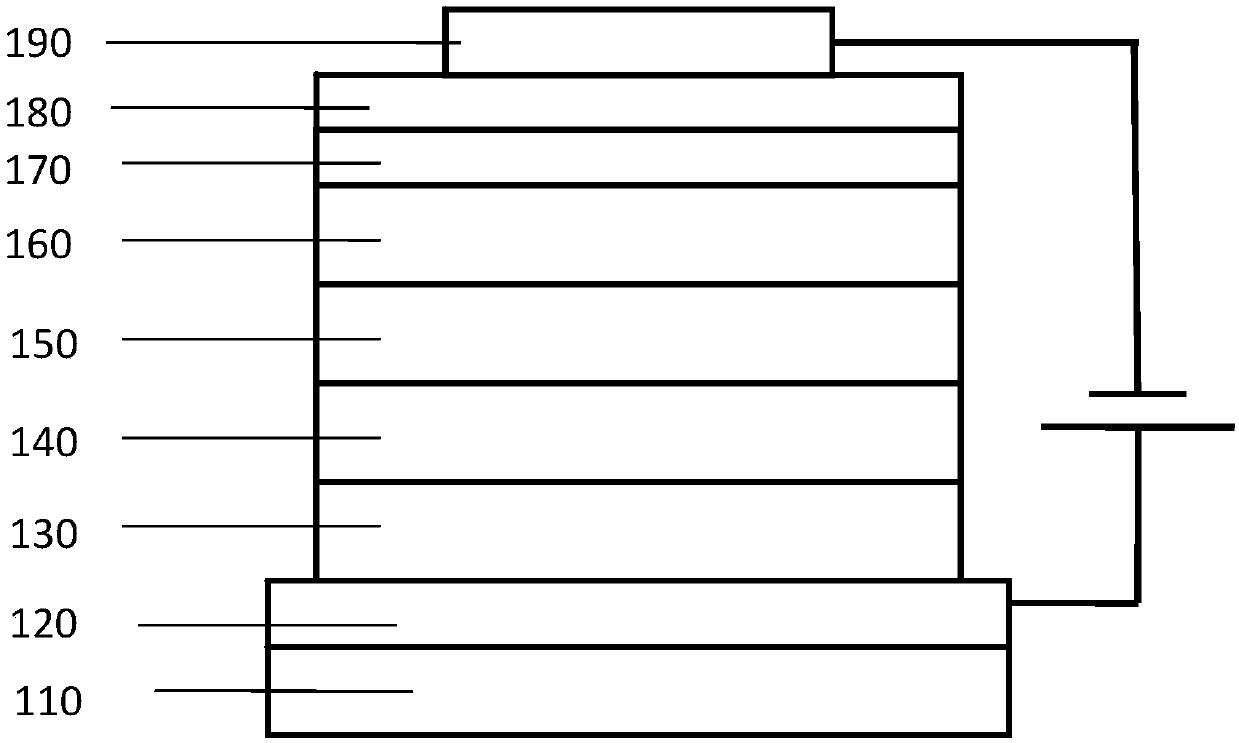Acenaphthene organic electroluminescent compounds and organic electroluminescent device thereof
A compound and electroluminescence technology, applied in organic chemistry, electro-solid devices, electrical components, etc., can solve the problems of charge imbalance in the light-emitting layer, reduce device efficiency, difficult electron flow, etc., and achieve high luminous purity and good thermal stability. , the effect of high luminous efficiency
- Summary
- Abstract
- Description
- Claims
- Application Information
AI Technical Summary
Problems solved by technology
Method used
Image
Examples
Embodiment 1
[0054] Synthesis of Compound 4
[0055]
[0056] In a one-necked flask, add intermediate A (0.8g, 3.3mmol), 2-bromotriphenylene (1g, 3.3mmol), K 2 CO 3 (0.9g, 6.6mmol), CuI (0.05g), o-phenanthroline (0.05g), o-dichlorobenzene (40mL), heated to reflux under nitrogen protection for 12 hours, after the reaction was over, the solvent was removed, and the crude product was Purified by column chromatography to obtain 1 g of solid with a yield of 64%.
Embodiment 2
[0058] Synthesis of compound 7
[0059]
[0060] The synthesis method is the same as that of compound 4, the raw material used is 3,5-diphenylbromobenzene, and the yield is 69%.
Embodiment 3
[0062] Synthesis of Compound 12
[0063]
[0064] The synthesis method is the same as that of compound 4, the raw material used is 9-phenyl-3-iodocarbazole, and the yield is 82%.
PUM
| Property | Measurement | Unit |
|---|---|---|
| thickness | aaaaa | aaaaa |
Abstract
Description
Claims
Application Information
 Login to view more
Login to view more - R&D Engineer
- R&D Manager
- IP Professional
- Industry Leading Data Capabilities
- Powerful AI technology
- Patent DNA Extraction
Browse by: Latest US Patents, China's latest patents, Technical Efficacy Thesaurus, Application Domain, Technology Topic.
© 2024 PatSnap. All rights reserved.Legal|Privacy policy|Modern Slavery Act Transparency Statement|Sitemap



